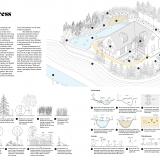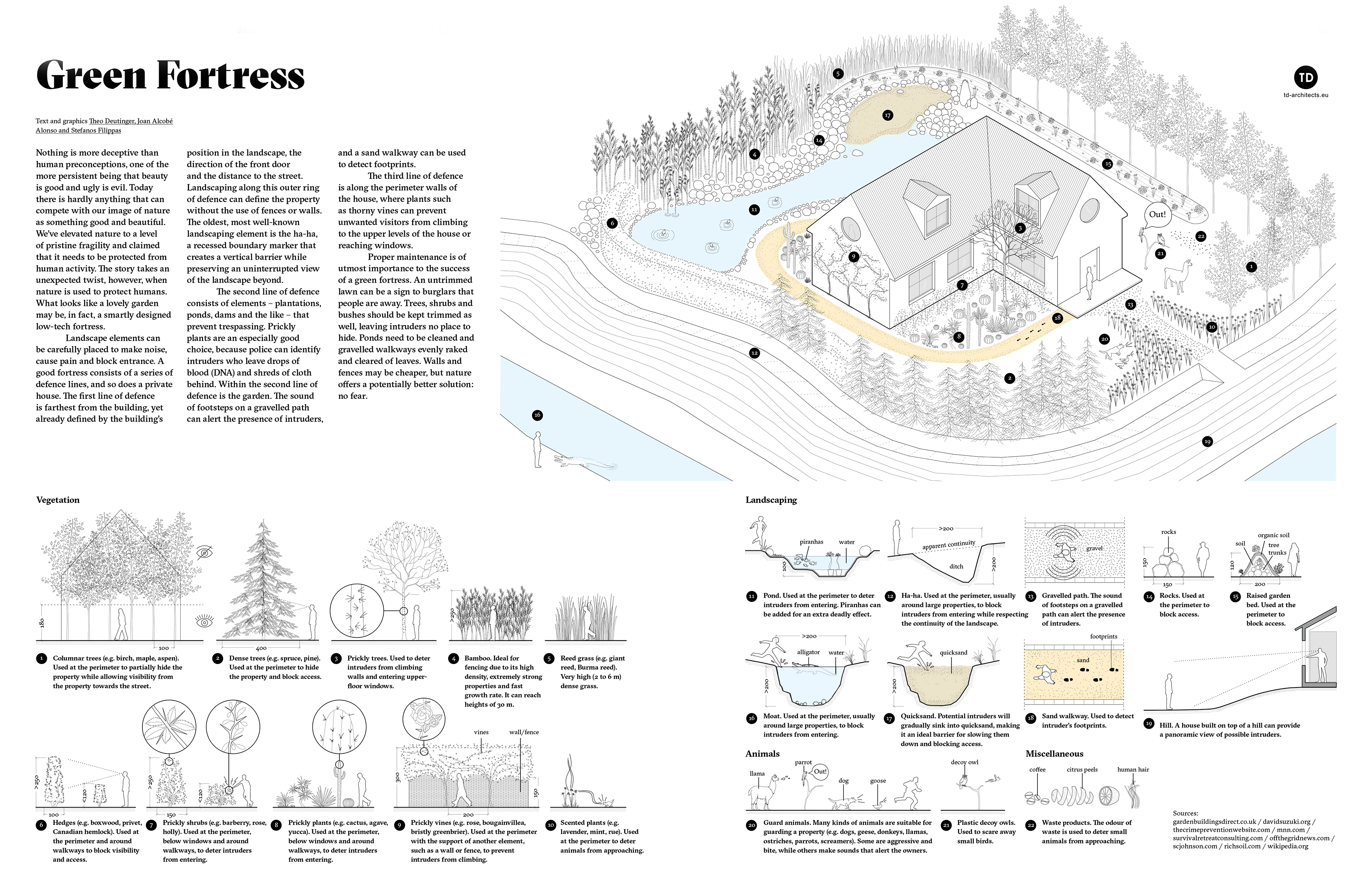Green Fortress
Mark Magazine #68 June/July 2017
Nothing is more deceptive than human preconceptions, one of the more persistent being that beauty is good and ugly is evil. Today there is hardly anything that can compete with our image of nature as something good and beautiful. We’ve elevated nature to a level of pristine fragility and claimed that it needs to be protected from human activity. The story takes an unexpected twist, however, when nature is used to protect humans. What looks like a lovely garden may be, in fact, a smartly designed low-tech fortress.
Landscape elements can be carefully placed to make noise, cause pain and block entrance. A good fortress consists of a series of defence lines, and so does a private house. The first line of defence is farthest from the building, yet already defined by the building’s position in the landscape, the direction of the front door and the distance to the street. Landscaping along this outer ring of defence can define the property without the use of fences or walls. The oldest, most well-known landscaping element is the ha-ha, a recessed boundary marker that creates a vertical barrier while preserving an uninterrupted view of the landscape beyond.
The second line of defence consists of elements – plantations, ponds, dams and the like – that prevent trespassing. Prickly plants are an especially good choice, because police can identify intruders who leave drops of blood (DNA) and shreds of cloth behind. Within the second line of defence is the garden. The sound of footsteps on a gravelled path can alert the presence of intruders, and a sand walkway can be used to detect footprints.
The third line of defence is along the perimeter walls of the house, where plants such as thorny vines can prevent unwanted visitors from climbing to the upper levels of the house or reaching windows.
Proper maintenance is of utmost importance to the success of a green fortress. An untrimmed lawn can be a sign to burglars that people are away. Trees, shrubs and bushes should be kept trimmed as well, leaving intruders no place to hide. Ponds need to be cleaned and gravelled walkways evenly raked and cleared of leaves. Walls and fences may be cheaper, but nature offers a potentially better solution: no fear.
Text and graphics Theo Deutinger, Joan Alcobé Alonso and Stefanos Filippas

